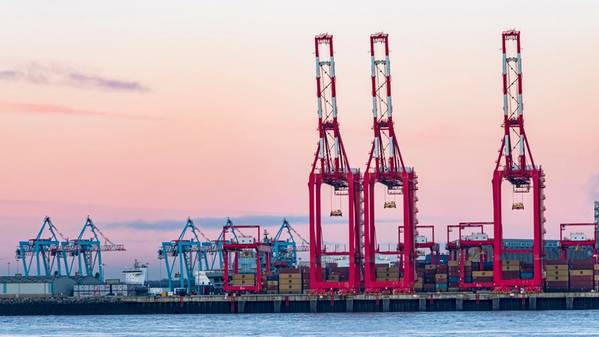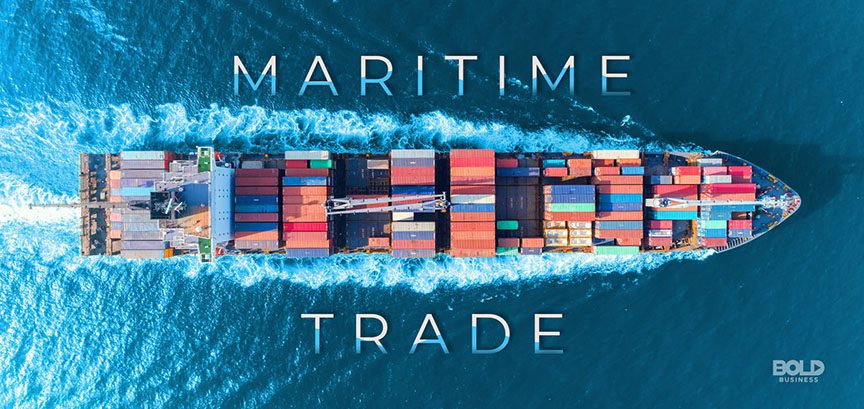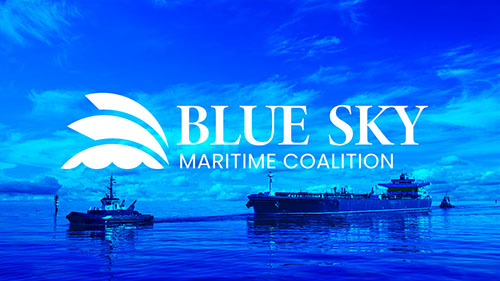1. Port and Terminal Information
1.1 Donghae Port operates 24/7, including holidays, but prior notice is required for after-hours operations (Korea Ministry of Oceans and Fisheries Regulation No. 2023-18).
1.2 Main commercial terminals:
– Donghae General Terminal: Max LOA 230m, depth 12.5m, 2 berths (Berth 1: 200m, Berth 2: 230m), handling general cargo, steel, and project cargo. Maximum permissible draft at all berths is 12.0m.
– Coal Terminal: Dedicated for coal handling, max draft 14m, equipped with conveyor system (capacity 2,000 tons/hour). Dust suppression system mandatory during operations.
– Container Terminal: 2 berths (CT-1: 300m, CT-2: 350m) with STS cranes (max 45t capacity), annual throughput ~500,000 TEUs. Reefer plugs available (100 units at CT-1, 150 units at CT-2).
– LNG Terminal: Restricted access, prior approval required from Korea Gas Corporation (KOGAS). Maximum allowable vessel size: 150,000 m³ capacity.
1.3 Port Limits: Defined as within 37°25’N-37°35’N and 129°05’E-129°15’E (Korea Hydrographic and Oceanographic Agency Notice 2021).
1.4 Tidal Data: Mean tidal range 0.3m; maximum observed tidal current 1.5 knots (KHOA Tide Tables 2023).
1.5 Port Services:
– Bunkering: Available at all berths (prior notice 24hrs required)
– Fresh water: Available at all berths (50 tons/hour capacity)
– Garbage disposal: Compulsory use of port reception facilities
2. Navigation and Pilotage
2.1 Mandatory Pilotage: Required for vessels >500 GT (Korea Maritime Safety Tribunal Notice 2022-11).
– Pilot boarding area: 37°29’12″N 129°07’45″E (VHF Ch 12).
– Pilot transfer: Daytime only unless emergency; max wave height 2.5m for boarding.
– Pilot ladder must comply with SOLAS Regulation V/23.
2.2 Channel Restrictions:
– Main channel width: 200m, depth maintained at 14m (dredged annually).
– Minimum underkeel clearance: 10% of draft (strictly enforced).
– Speed limit: 8 knots in inner harbor, 12 knots in approach channel.
2.3 Navigational Warnings:
– Frequent fog from April to June; radar-assisted navigation recommended.
– Fishing gear reported within 2nm of port limits; caution advised.
– Strong northeasterly winds (up to 30 knots) common in winter months.
2.4 Vessel Traffic Service (VTS):
– Mandatory reporting at waypoints VTS-1 (37°30’N 129°10’E) and VTS-2 (37°28’N 129°08’E).
– Continuous VHF monitoring on Ch 16 and working Ch 14 required.
3. Anchorage Areas
3.1 Designated Anchorage Zones:
– No.1 Anchorage: 37°30’00″N 129°08’00″E (max 5 vessels, depth 20m).
– No.2 Anchorage: 37°29’30″N 129°09’00″E (max 3 vessels, depth 25m).
– Emergency anchorage: 37°28’00″N 129°10’00″E (KHOA Chart No. 112).
3.2 Anchorage Regulations:
– Holding ground: Firm sand/mud (Korea Hydrographic Survey Report 2021).
– Vessels >200m LOA must request prior approval for anchorage.
– Anchorage watch mandatory; AIS must remain active.
– Minimum distance between anchored vessels: 3 times vessel length.
3.3 Anchorage Prohibitions:
– No bunkering at anchor without special permission.
– No cargo operations at anchor except emergencies.
4. Cargo Operations
4.1 Prohibited Cargoes:
– UN 1267 (Pyrophoric liquids) without special permit.
– Radioactive materials above Class III (Korea Nuclear Safety Act).
– Asbestos in any form (Korea Occupational Safety and Health Act).
4.2 Grain Handling:
– Mandatory fumigation certificate required 24hrs before loading.
– Dust suppression measures enforced during discharge.
– Maximum loading rate: 1,000 tons/hour.
4.3 Dangerous Goods:
– IMDG Code compliance required; stowage plans to be submitted 48hrs prior.
– Explosives (Class 1) require separate berthing arrangement.
– Toxic gases (Class 2.3) require special ventilation arrangements.
4.4 Heavy Lift Operations:
– Cargo >100t requires terminal pre-approval and stability assessment.
– Crane operations suspended when wind exceeds Beaufort 6.
4.5 Container Operations:
– Mandatory container weight verification (SOLAS VI/2).
– Hazardous containers must be stowed according to IMDG segregation rules.
5. Safety Regulations
5.1 Enclosed Spaces: Strict enforcement of IMO Resolution MSC.436(99) for entry.
5.2 Pre-Operation Briefing: Mandatory safety meeting with terminal operator before cargo ops.
5.3 Hot Work Permits: Require Port State Control inspection approval.
5.4 Fire Safety:
– Firefighting equipment must comply with SOLAS Ch. II-2.
– Monthly fire drills logged for PSC inspection.
– Smoking strictly prohibited in cargo areas.
5.5 Gangway Safety:
– Night operations require illuminated gangways with safety nets.
– Minimum width 0.6m, maximum angle 30 degrees.
5.6 Emergency Equipment:
– Lifebuoys with self-igniting lights required at all working decks.
– Emergency escape breathing devices (EEBDs) must be available near cargo holds.
6. Environmental Compliance
6.1 Zero Discharge Policy: All wastes must be retained onboard (Korea Marine Environment Management Act Art. 20-3).
6.2 Fuel Regulations:
– Low-sulfur fuel (<0.1%) mandatory within port limits.
– Bunker delivery notes (BDNs) subject to random checks.
– Exhaust gas cleaning systems (scrubbers) must be in closed-loop mode.
6.3 Ballast Water:
– Must comply with IMO BWM Convention; records available for inspection.
– Ballast water exchange prohibited within 12nm of coast.
6.4 Oil Pollution Prevention:
– SOPEP equipment must be ready for immediate use.
– Oil spill response drills required quarterly.
7. Emergency Contacts
7.1 Port Control: VHF Ch 16/14 (24hr monitoring).
7.2 Korea Coast Guard Donghae Office: +82-33-520-3110 (official).
7.3 Marine Pollution Response Team: +82-33-520-3150 (spill emergencies).
7.4 Medical Emergency: Donghae Port Clinic +82-33-520-3200.
7.5 Port State Control: +82-33-520-3180.
8. Special Notes
8.1 Winter Operations (Dec-Feb):
– Ice monitoring required for anchored vessels.
– Tugs on standby for vessels >20,000 DWT.
– Deck anti-icing measures recommended.
8.2 Typhoon Season (Jun-Sep):
– Mandatory evacuation when Signal No.3 issued by KMA.
– Vessels must submit contingency plans to Port Authority.
– Mooring lines to be doubled when typhoon warning issued.
8.3 IMO Number Display: Must be visibly marked on superstructure (Port Ordinance §7-2).
8.4 Cyber Security: Ships must implement IMO MSC-FAL.1/Circ.3 guidelines for IT systems.
8.5 Port Security:
– ISPS Level 1 maintained at all times.
– Armed guards prohibited without prior authorization.
9. Additional Requirements
9.1 Pre-Arrival Documentation:
– Advance Notice of Arrival (ANOA) 72hrs prior (Korea Ship Safety Act Art. 12).
– Crew/passenger manifests submitted electronically via K-CIS system.
– Last 10 ports of call must be declared.
9.2 Port State Control:
– Tokyo MoU inspections target ships >10 years old.
– Deficiencies may result in detention under PMS Code.
– Special attention to life-saving appliances and firefighting systems.
9.3 Crew Welfare:
– Shore leave permitted with valid seafarer’s ID (ILO 185 compliance).
– Medical assistance available at Donghae Port Clinic (24hr).
– Minimum rest hours must comply with MLC 2006.
9.4 Repairs and Services:
– Hot work requires separate permit from port authority.
– No underwater repairs without prior approval.





